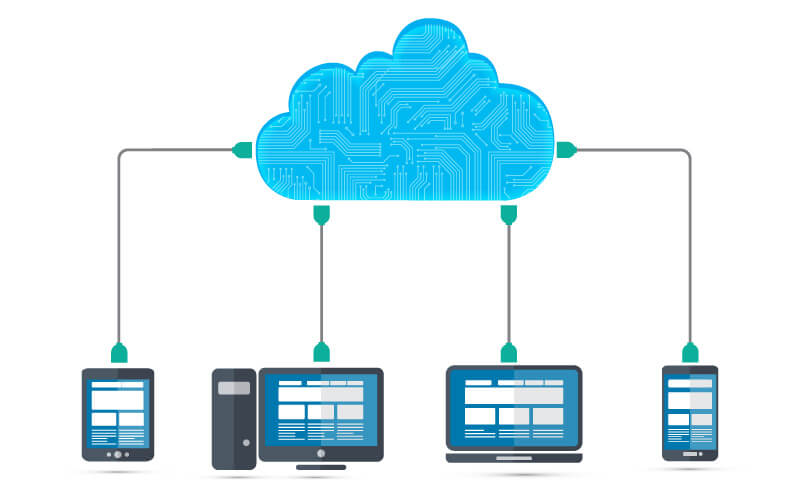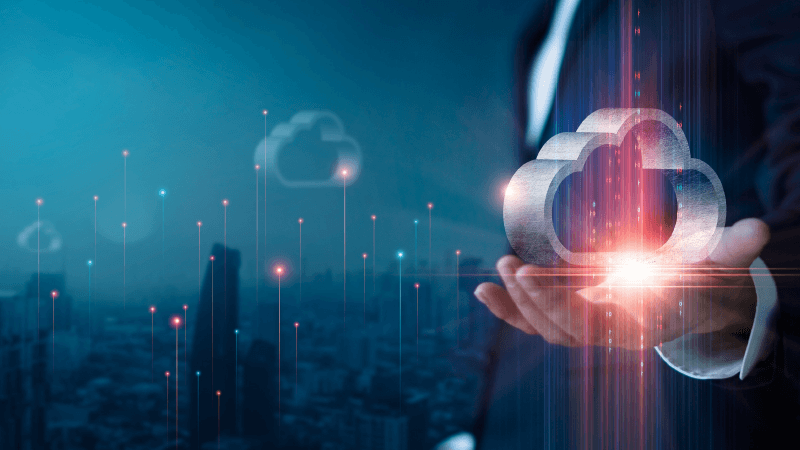This website uses cookies. By continuing to browse the site, you are agreeing to our use of cookies
Is COVID-19 Impacting your Application Cloud Migration Plans?
Cloud
December 14, 2020
How COVID-19 is Changing the Application Cloud Migration Scenario
Cloud is fast becoming the new normal, thanks to its on-demand scalability, flexibility, and amazing cost benefits. In the current scenario where COVID-19 is drastically changing the ways organizations manage their businesses, right from hiring workforce to delivering projects, moving to cloud has become inherent to grow rapidly without compromising on client requirements.
Cloud technology has gained a high level of maturity over the years and has stood the test of time in handling complex monoliths of almost any size. Application cloud migration is no more limited to just lift-and-shift but offers many more benefits to bring down costs and reuse legacy applications optimally on cloud. This is very important during challenging times like COVID-19 when a proper balance needs to be maintained between speed, reliability, security, and operational costs, especially when teams are working remotely (or say working from home), and manual processes need to be automated as rapidly and precisely as possible.

Having said that, application migration to cloud should not be at the cost of losing the basic functionality of legacy applications as that can hit customer experience severely and defeat the overall purpose of cloud transformation. Thus, it becomes logical to partner with a service provider who is capable of handling enterprise-wide cloud adoption and can migrate your applications by retaining 100% business functionality on cloud.
Migrating an Application to Cloud in a Simple and Cost-efficient Way
A successful application cloud migration depends mainly on the cloud strategy adopted and how well it aligns with business goals. For faster and better ROI, it is highly recommended to go for enterprise cloud adoption rather than migrating in phases. Enterprise cloud adoption ensures superior orchestration of people, processes, and technology, and minimizes the business-IT gap.
Focusing on the following areas can simplify your cloud journey and reduce costs significantly:
Do Cloud Assessment and Check Scope for TCO Reduction
A thorough assessment of legacy applications is a must to check their potential to move to cloud. Cloud adoption strategy can vary depending upon application complexity. Thus, insightful details need to be gathered right at the start to avoid unanticipated challenges. At the same time, using an advanced TCO calculator can give a quick view of how much costs can be saved by moving monoliths to cloud and what alterations in approach can reduce the costs further. For instance, Hexaware’s enterprise platform for cloud adoption Amaze for Applications uses a state-of-the-art TCO calculator and identifies areas to reduce application TCO by up to 75%, transformation cost by up to 60%, and implementation time by 70%.
Reduce Licensing Costs
Licensing costs form a sizeable chunk of IT spends. Especially when your monoliths are Java or C# based, it becomes quite logical to move them to a SaaS-based cloud platform. By doing this, you get numerous options to minimize or even eliminate licensing costs by replacing heavy-weight application and database servers with equivalent cost-efficient options.
Pick Technology Stack Wisely
Technology plays a vital part in not just migrating, but also making applications work efficiently on cloud. What technology you choose today largely defines how well you can reap benefits of cloud in future. Establishing the right technology platform gives a boost to application cloud migration efforts and ensures long-term performance reliability.
Don’t Hesitate to Automate
Right and timely automation of manual processes can get your monoliths on cloud in just weeks. For instance, while it usually takes 6 to 9 months to cloud replatform an application manually, Amaze™ for Applications does this in just 4 to 6 weeks through extreme automation and reduces 75% of manual efforts. As shown in the diagram below, Amaze™ for Applications implements extreme automation into the 3 major phases of migrating applications to cloud:
- Automation of assessment
- Automation in transformation
- Automation in build and deployment

Monitor Migration Progress Closely
When going for enterprise-level cloud adoption, constant monitoring of application migration to cloud is necessary. Apt enterprise-level features should be implemented to give a transparent view of all the applications headed to migration, their dependencies, and their status in the cloud journey. This helps the respective stakeholders in quick decision-making.
Ensure 24×7 Security
Once your application is up and running on cloud, it starts interacting with various internal and external systems on a continuous basis. This makes it quite vulnerable to security breaches or lapses. Putting strict security features in place is critically important to protect data and systems 24x.
Setting the Path Right for Application Cloud Migration
Application migration to cloud goes through various interdependent stages and thus, a pre-defined strategy is required to stay on track. Transforming legacy applications to cloud-friendly architecture in a cost-effective way needs experience and expertise. Thus, partnering with a cloud service provider who can handle your application’s complexities and retain its 100% business functionality on cloud is critical to optimize ROI (Return on Investment). To enable businesses to rapidly implement enterprise-wide cloud adoption, Amaze™ for Applications leverages API-enablement to digitally transform and seamlessly integrate cloud applications with the rest of the enterprise. It cloud replatforms an entire application ecosystem including the application server, database, batch programs and schedulers, and message brokers. So, stop worrying about COVID-19 impact and start with your cloud journey now. Engaging with an experienced cloud service provider is the key to reduce your TCO drastically and bring in cloud culture across your enterprise.
About the Author

Mandar Joshi
Read more
Related Blogs

Understanding Snowflake Cortex for Gen AI Applications with Sensitive Data
- Data & Analytics
- Generative AI
- Cloud

Ready to Pursue Opportunity?
Every outcome starts with a conversation
















